Top 7 Project Management Questions To Ask Before An IT Project Takeover

Filip Niedziela

Switching to a new business and technology partner is a tough decision, and successfully executing the transition is even harder. Fortunately, these 7 project management questions will help you navigate the complexities of taking over an existing project and elevating it to the next level.
In this article, we'll share our professional insights on IT project takeovers. To equip you with the knowledge necessary to tackle this challenge, we've compiled a list of the top 7 essential project management questions to ask when initiating the process. Additionally, we'll draw from our recent experience in taking over a project for one of our clients, Aerotunel, to illustrate how to take that big leap from theory to practice.

Why Do IT Project Takeovers Happen?
IT project takeovers can occur for several reasons, such as:
- Strategic Changes: Companies may initiate takeovers when shifting priorities or business objectives require a more suitable contractor.
- Poor Quality: In cases of unmet expectations and inadequate deliverables, teaming up with a new partner becomes essential to save the project.
- Shortage of Resources: Project delays and budget constraints may necessitate a takeover to secure the project's future success.
- Digital Growth: Organizations lacking in-house expertise for digital transformation may seek a capable technology partner for support.
Essentially, these project takeovers act as a means to adapt to evolving market conditions and remain competitive in today's technology landscape.
The Critical Role of a Project Manager
Taking over an existing project poses challenges for all parties. However, it's safe to say that this change is especially demanding for the new business and technology partner, as it involves inheriting an existing project with pre-established dynamics, potential issues, and high stakeholder expectations. Here, the project manager plays a crucial role in bridging the gap between old and new processes.
To ensure a smooth transfer of responsibilities, a project manager must:
- Align the project with new goals and objectives.
- Address and resolve lingering problems.
- Maintain established quality standards.
Effective decision-making, navigating complexities, and clear communication are key attributes that make a project manager indispensable for a successful project takeover.
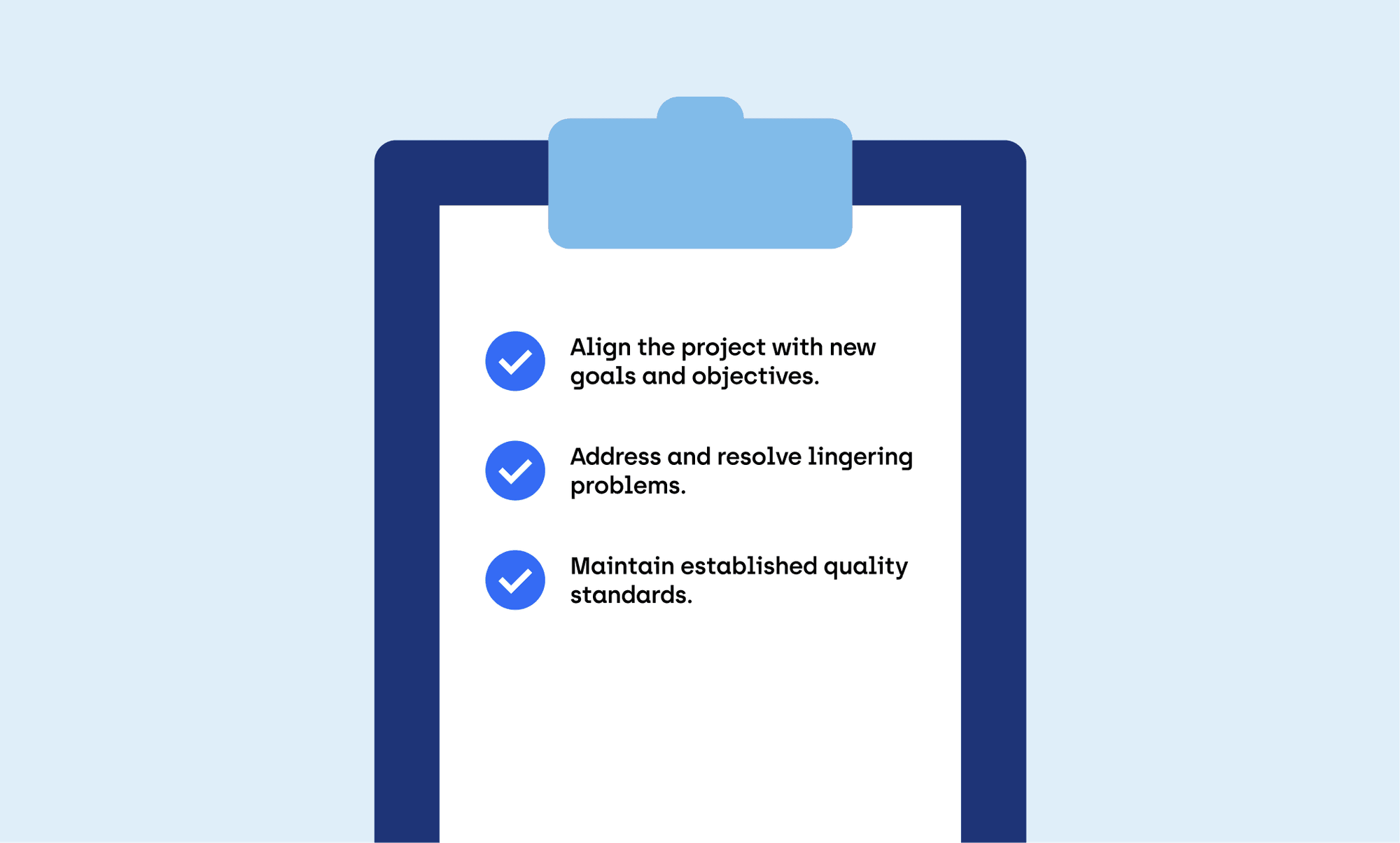
From Theory to Practice: The 7 Project Management Questions
All of this must seem really intimidating, especially for less-experienced project managers. To ease the process, we've compiled a list of 7 crucial questions for ensuring a structured and stress-free transition. Recently, we navigated a complex project takeover with a new client, Aerotunel. This case study will provide a real-life illustration of how these questions can be effectively applied.
Meet Aerotunel: A Project Takeover Success Story
Aerotunel, a leading indoor skydiving business in Europe, operates under the brand FlySpot. Offering customers the thrill of free-fall and levitation in specially designed wind tunnels, FlySpot utilizes state-of-the-art technology across four locations in Poland: Wrocław, Warszawa, Katowice, and Gdańsk. Their sister brand, DeepSpot, owns the deepest pool for freediving and scuba diving in Europe. Committed to providing the best service through the latest technology, they chose hero/dot as their new business and technology partner.
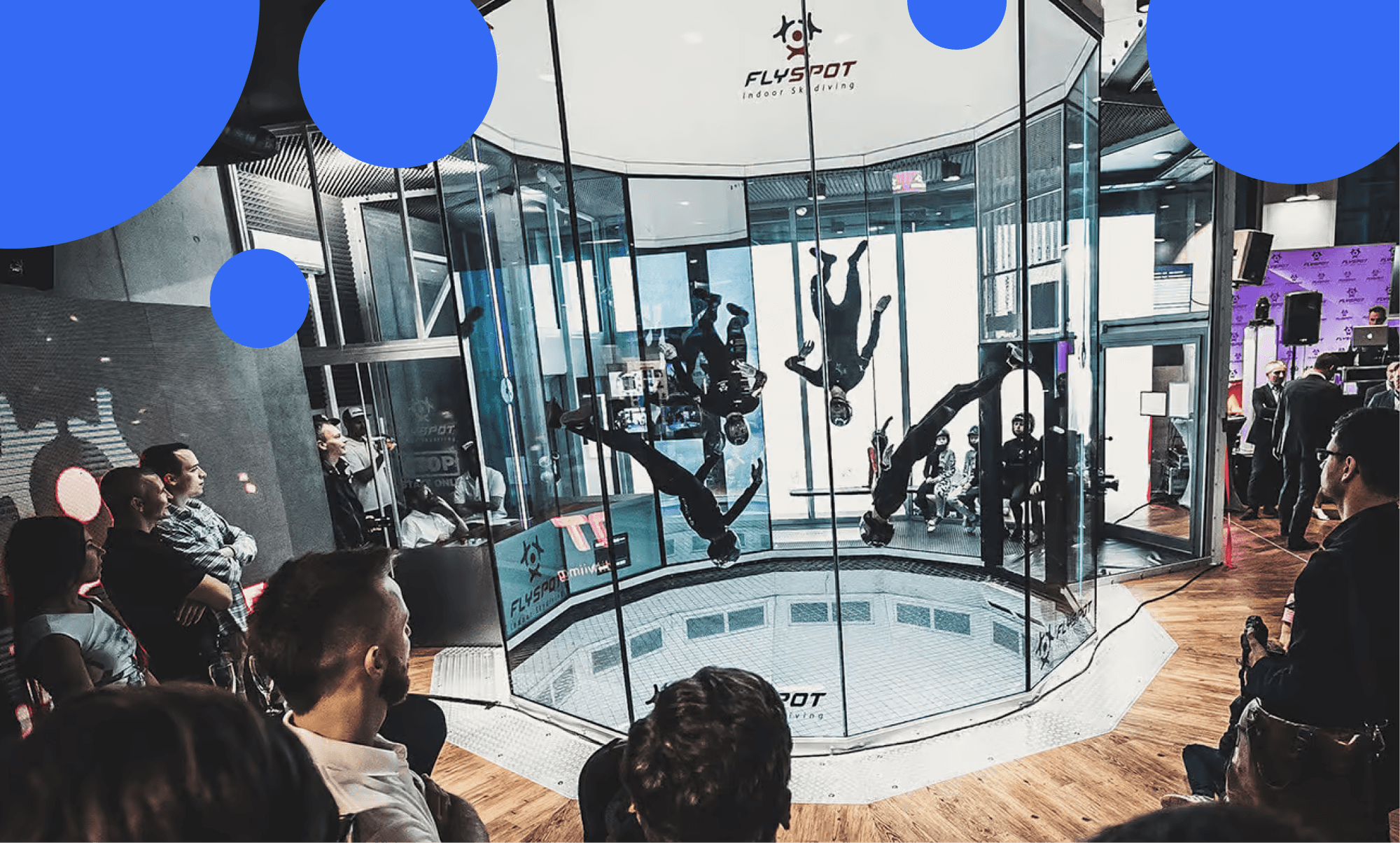
#1 What is the Current Status of the Project?
Theory
Understanding where the project currently stands is a crucial initial step, providing a baseline for the entire takeover process. Information about completed milestones, unresolved issues, and potential bottlenecks forms the foundation for strategic planning.
To answer this question, follow these steps:
- Gather Available Data: Acquire project documentation, including the project charter, timelines, project plan, requirements, and deliverables.
- Conduct Meetings: Reach out to the previous project manager and project team members for exclusive insights to fill gaps in documentation.
- Analyze: Conduct a comprehensive project audit, identifying existing processes in order to add improvements or implement new ones.
Practice
In FlySpot's case, their current system underwent iterative development for over a decade at a very rapid pace, leading to management and operational issues. The complex structure causes frequent system malfunctions, hindering the development of even the simplest features. For instance, handling promotions, a task meant for the front desk, currently requires a developer's intervention and manual entry at midnight, proving highly inefficient in terms of cost and time.
Moreover, inadequate project documentation posed a significant challenge in understanding the project's current status. However, extensive workshops with the previous project owner and team members enabled us to gather necessary insights into the system's inner workings.

#2 What Are the Project Objectives and Scope?
Theory
Clearly defining project objectives ensures alignment among stakeholders, the current project manager, and the team, fostering a shared vision. A transition to a new service provider is also an opportunity to identify necessary changes and additions to the scope.
During this stage:
- Propose Recommendations: Based on documentation, technical possibilities, budget analysis, and observations, suggest necessary changes to the scope.
- Workshop Solutions: Validate and discuss proposed adjustments with key stakeholders to establish the future trajectory for the project.
- Document: In the project charter, record the final scope and objectives to reduce the chances of misunderstandings during the takeover.
Practice
With hero/dot as the new business and tech partner, the main objective was clear: total digital transformation of Aerotunel's system. After a comprehensive project audit, our team identified the most optimal and cost-efficient solution: developing a new system from scratch. The client embraced this recommendation, recognizing its potential for digital growth. During the workshops, we outlined the project scope, covering business model conceptualization, design, user platform, back-office, integrations, and maintenance.
#3 What Is the Project Schedule and Milestones?
Theory
The project schedule and milestones serve as a roadmap, guiding the project team to successful completion. Assessing the project's historical progress under the previous project manager allows the current PM to create a realistic and refined project plan, avoid potential bottlenecks, and manage stakeholder expectations.
To complete this step, you have to:
- Review: Get a clear understanding of the project's progress and performance so far, and assess the original schedule.
- Analyze risks: Document any delays to identify potential pitfalls and areas for optimization.
- Prioritize: Set realistic milestones, prioritize tasks, and arrange them into a structured timeline.
- Consult: Validate the proposed project plan with the team to ensure a successful implementation.
Practice
The FlySpot project began in late July, dedicating the first months to a project audit, stakeholder workshops, recommendations, and a comprehensive takeover plan. This thorough approach to planning resulted in a detailed roadmap with three main phases. After reaching the first milestone, resource-consuming maintenance of the old system will be dropped, allowing for increased pace.
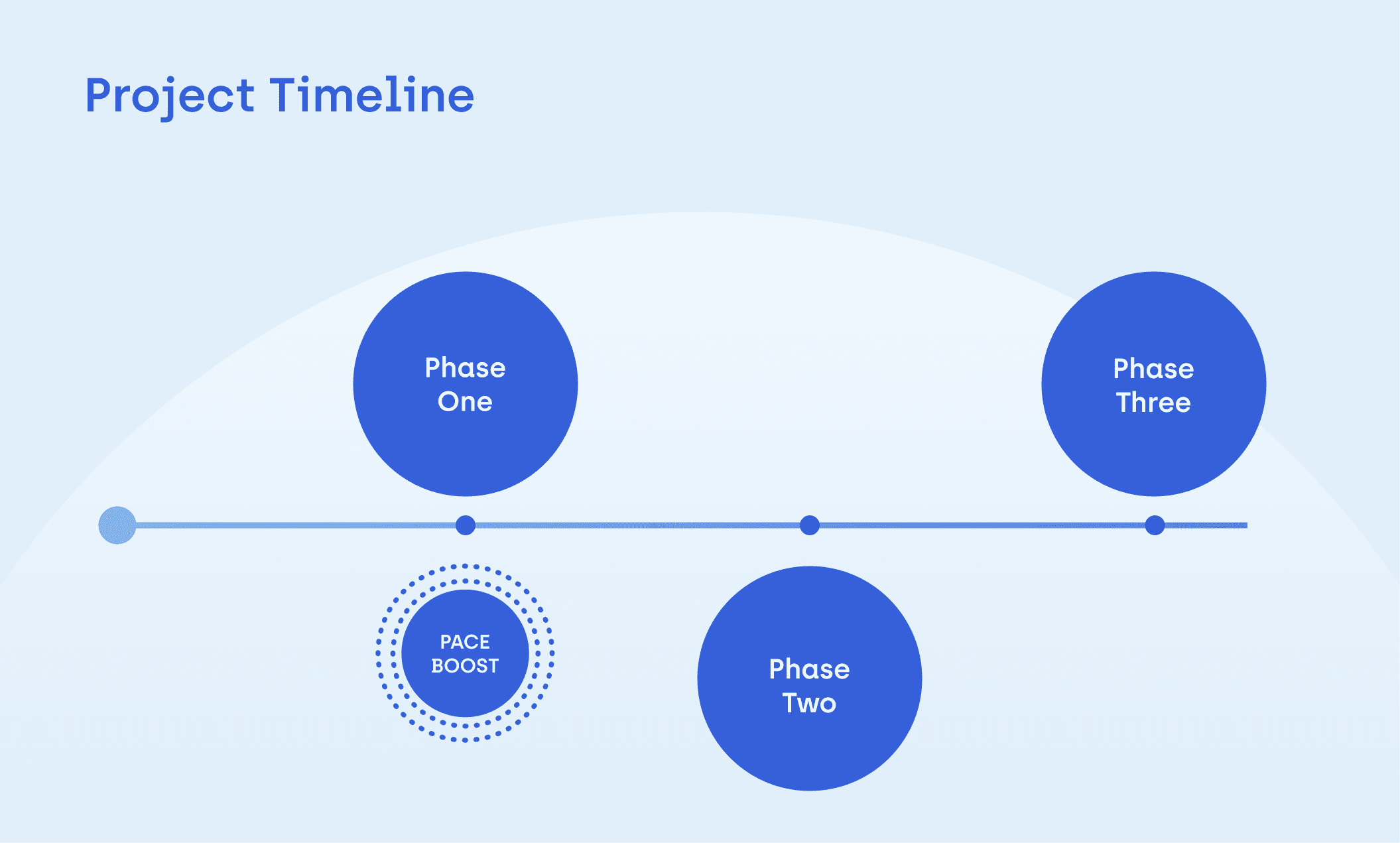
#4 What Are the Technical Details and Architecture?
Theory
Understanding the technical aspects of the IT product, including architecture, technologies, and third-party integrations, is crucial for ensuring a smooth transition without disrupting the system's integrity and functionality. This information also aids in assessing if the project is going in the right direction, and making adjustments if necessary.
During this stage:
- Review the Documentation: Examine existing technical documentation and conduct meetings with the technical team to discuss any specific considerations or challenges.
- Evaluate Dependencies: Pin-point external dependencies between components and third-party integrations (including hardware) that might impact the project.
- Propose Enhancements: Identify areas for improvement or optimization based on the current technical setup.
Practice
In the Aerotunel project, a technical analysis revealed that even significant enhancements to the convoluted architecture and outdated technology wouldn't suffice. Choosing to rewrite the system from scratch as the most cost-efficient solution, we opted for .Net (C#) and MSSQL for backend, Azure for hosting, and Angular (TypeScript) for frontend, considering them the most fitting choices. These technologies are quite similar to the ones used in the previous system but necessary changes have been made so as to prepare the system to stay up-to-date in the long term.
Regarding dependencies, the challenge lies in third-party integrations, especially with hardware. That's because to offer the best service, FlySpot employs cutting-edge technology. For instance, to film skydivers, a special tag on the safety helmet connects with an antenna located on the facility's rooftop to initiate recording of a skydiver’s experience in the wind tunnel.
#5 What Are the Existing Risks and Issues?
Theory
Identifying existing risks and issues is the starting point for proactive risk management and effective problem resolution. It allows the takeover team to learn from past mistakes and, with sufficient planning, prevent history from repeating. Conducting a risk analysis also reveals new potential pitfalls, enabling the development of mitigation strategies.
To answer this question, follow these steps:
- Evaluate: Examine the risk register provided by the last project manager to understand past problems, their current status, and resolutions.
- Elaborate: Discover and document any new risks arising due to changes in scope or during the takeover process.
- Strategize: Document additional risks and their potential impact in the register, complete with tailored mitigation strategies.
Practice
During the takeover preparation, we conducted a comprehensive risk analysis. Then, we pinpointed three most prominent potential issues:
- Scope Creep: Developing a new system aimed to accommodate new features and improvements. That's why careful management was crucial to prevent the project scope from expanding beyond reasonable boundaries.
- Constant Change Requests: A continuous influx of alterations to project requirements, specifications, and functionalities poses a risk of delays and resource issues.
- Old System Maintenance: Maintaining the old system architecture until the new one is implemented could potentially slow down development and hinder a smooth transition to the updated system.
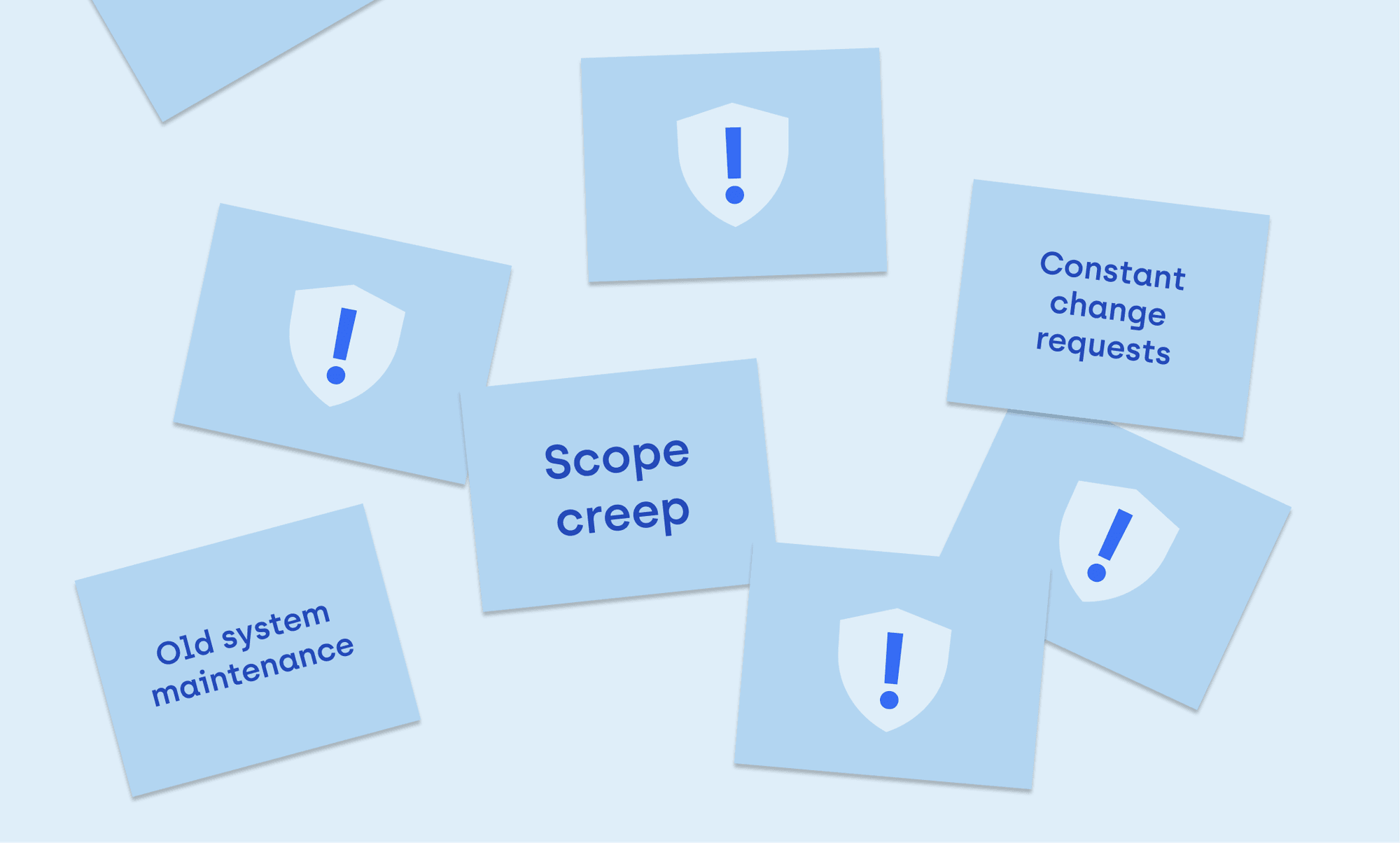
#6 Who Are the Key Stakeholders?
Theory
Identifying key stakeholders, both internal and external, is vital for effective communication, collaboration, and decision-making not only during the takeover phase but throughout the entire project lifecycle. Stakeholders play a crucial role in shaping project requirements, providing resources, and influencing the project's trajectory.
During this stage:
- Identify Stakeholders: Contact all individuals and groups with a vested interest in the project, including the client, previous project manager, team leaders, team members, project sponsor, and companies providing necessary integrations.
- Assess Engagement: Evaluate the level of involvement required from each stakeholder to ensure smooth collaboration.
- Develop a Communication Plan: Outline how, when, and what information should be shared with each involved party, considering their expectations and preferences. RACI Matrix is a useful and simple tool for describing who should be consulted, informed, and held accountable for a specific set of responsibilities.
Practice
IT project takeovers demand a higher level of collaboration and effective communication, as seen in Aerotunel's case. To approach this task in a well-structured manner, we identified three main stakeholder groups:
- The Client: Aligning efforts with Aerotunel's vision was our priority, focusing on discussing project goals, uncovering requirements, and setting expectations.
- The Team: Consulting with team members responsible for the old system's development and those from FlySpot's and DeepSpot's sales departments was crucial. This allowed us to learn about the system's inner workings and the business model structure.
- Integration Companies: Given the substantial integrations required, companies providing necessary software and hardware solutions, such as the gateway and locker system, antennas for filming, and a sales system, were recognized as important stakeholders.
#7 What is the Strategy for Change Management During the Takeover?
Theory
Change management strategy is integral to a project takeover, ensuring a smooth transition and minimizing resistance from the existing team and stakeholders. A well-defined transition plan and requirements help navigate the complexities of change effectively. This is the final question, as it requires knowledge gained from asking all the previous ones.
During this final step:
- Review Findings: Evaluate, synthesize, and draw conclusions from the information already acquired, focusing on key aspects such as objectives, scope, schedule, risks, and technical details.
- Phased Implementation: Plan a phased approach to the takeover, if possible. This can help manage resistance by laying the groundwork for gradual adaptation.
- Monitor the Situation: Regularly assess the overall effectiveness of implemented strategies, allowing for timely adjustments to the change management plan.
Practice
The time dedicated to extensive workshops and a complex project audit paid off with precise recommendations and a data-driven takeover strategy. Now, the previous contractor has officially left, and hero/dot has stepped in as Aerotunel's business and technology partner. The FlySpot project is in the development phase, with our team of professionals overseeing a smooth transition to the new and improved system.
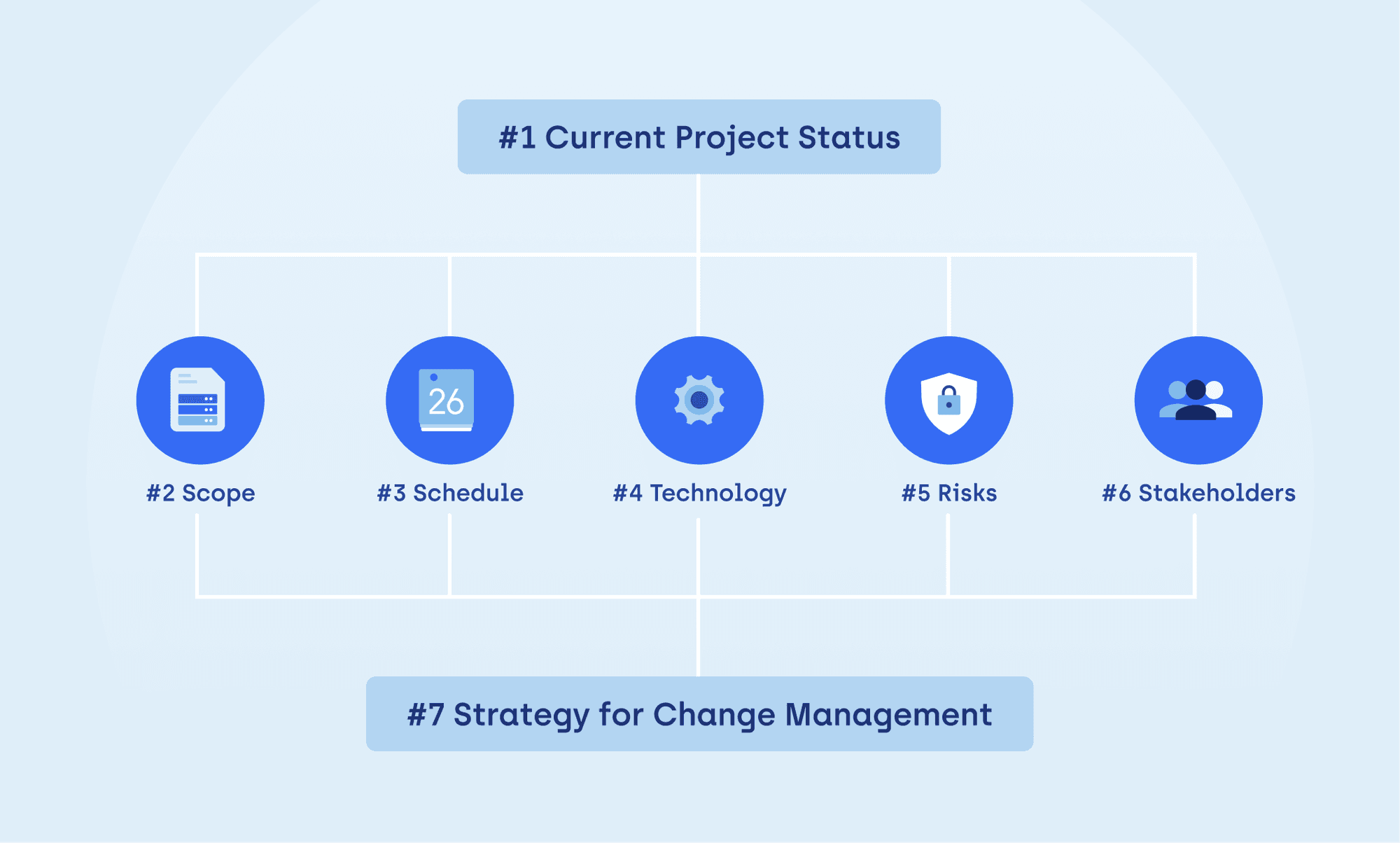
In Conclusion
Navigating the intricacies of an IT project takeover is undoubtedly challenging, but armed with the insights from these top 7 project management questions, the process becomes more manageable. We hope that our experience with Aerotunel's project showcased the importance of thorough preparation in navigating even the most complex IT project transitions. With the right approach and a commitment to continuous improvement, organizations can master the art of IT project takeovers and pave the way for successful project outcomes.
If you're looking for a capable business and technology partner that can handle the complexities of a project takeover, contact us today. We look forward to discussing strategies for a structured and stress-free transition.
If You Enjoyed this Article, Check Out our Other Publications:
Need expert assistance with your digital project?
You may also like

